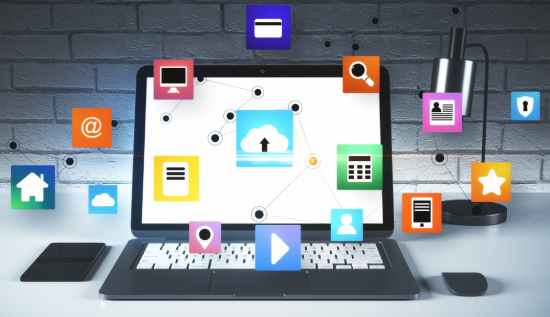What is a Data Source and Its Importance in Computer

Strengthen your knowledge of data sources, their importance in computers, and how to identify critical components.
Data source is a very important term in the fields of computer and information technology. It is very important to know what is data source in computer when you are making software, analyzing data, or handling databases. We'll talk about what a data source is in computers, the different data sources, give you some data sources examples, and talk about why it is important to note where your source data comes from. We'll also talk about the question, "which is not a data source component?"
What is a Data Source?
A data source is any place, method, or building from which data comes. It could be a file, a database, an API, a monitor, or even a person. What is a data source? A data source is where the data that an application, report, or study uses comes from. It's easy to understand: a data source is where all data-driven actions in computers begin.
What is Data Source in Computer Systems?
When we talk about what is data source in computer, we usually mean digitally saved structured or unstructured data. In this case, a data source could be:
- One that stores data in tables, like MySQL or PostgreSQL
- A list of numbers, like in Microsoft Excel or Google Sheets
- Storage in the cloud, like AWS S3
- APIs like GraphQL and REST
- Things like JSON, XML, and CSV files
- Logs that computers make
To get info, process it, and store it, computers talk to data source. Applications must be able to quickly connect to the right data source in order to work well and be reliable.
Different Data Sources in Computer Systems
Based on the application and the users' wants, there are a lot of different datas sources. Here are some of the most popular types:
- Databases: Structured collections of information that are set up with tables, records and fields.
- Flat Files: These are text files with raw data, like CSV or TXT files.
- Cloud Services: Google Drive, Dropbox, and Amazon Web Services are just a few of the platforms that give storage and APIs in the cloud.
- Web APIs: Services that web-based apps can use to get to data, like the Twitter API for tweets.
- Manual Input: Information that users enter by hand into forms and apps.
These different datas sources are used for different things, and the type of job will determine which one to use.
Data Sources Examples
Here are some data sources examples to help you understand the idea better:
- MySQL Database: A business uses a MySQL database to keep track of information about its customers.
- Google Sheets: Use Google Sheets to keep track of how well a marketing effort is doing.
- GitHub API: The API lets developers get information about projects on GitHub.
- Bucket on Amazon S3: A data scientist gets raw data files from a bucket on Amazon S3.
- CRM for Salesforce: The Salesforce platform stores, and gets sales info.
These data sources examples show how different data sources can be, and how important they are for different software systems to work.
Why is it Important to Note Where Your Source Data Comes From?
When you work with data, one of the most important things you can do is remember why is it important to note where your source data comes from. Because of these things:
- Data Accuracy: Knowing where the data came from is a good way to make sure that it is real and correct.
- Data Integrity: Knowing where the data came from makes sure it hasn't been changed or messed with in a bad way.
- Compliance and Regulations: Many fields have strict rules about where data comes from, like HIPAA and GDPR.
- Effective Troubleshooting: When mistakes happen, fixing the problem faster is easier if you know where the data came from.
- Better Analysis: When analysts know the context and limits of the source data they can better understand what the results mean.
Then, why is it important to note where your source data comes from? This is one of the most important questions in data control and management. It makes sure that everything is reliable and of high quality in any computer setting.
Which is Not a Data Source Component?
When talking about what is a data source, it's also important to know what its parts are. A data source usually has these things:
- Connection String: Details like the server name, database name and user passwords are in the connection string.
- Schema information: Shows how the data is organized, with things like tables and fields.
- Data Location: The place where the data is stored either physically or logically.
But which is not a data source component? Options like "Printer" and "Monitor" are NOT parts of a data source. They are output devices, not data sources. In the same way, business logic or user interface elements that are specific to a program are not part of the data source.
When developing data-driven systems, it's easier to keep things straight if you know which isn’t a data source component.
The Importance of Data Sources in Modern Computing
Data is at the center of almost all technology today. This is why info sources are important:
Data-Driven Decision Making
Companies use data to help them make strategic choices, run their businesses more efficiently, and spot changes in the market. Trustworthy data sources are what these ideas are based on.
AI and Automation
High-quality data sources are very important for modern technologies like AI and machine learning. Even the most advanced models would not work without the right data sources.
System Integration
Several applications often need to talk to each other in complex systems. They do this by using shared data sources which keeps everyone in the environment in sync and consistent.
Security
To stop breaches, leaks, and illegal access, it's important to know exactly where the data comes from and keep it safe.
Scalability
Scalable systems are built so that data sources can be managed efficiently. Picking the right kinds of different data sources helps apps grow without having to do a lot of work again.
As a result, every IT worker needs to have a good grasp of what is a data source.
Conclusion
For effective data handling, you need to know what a data source is and what it means in computing. Every part of data-driven choices is affected by different datas sources like databases and APIs. For example, you should know why it's important to keep track of where your source data comes from.
Companies can improve the accuracy and performance of their data plans by identifying examples of data sources, and telling the difference between those that are and aren't data sources.
In a world that runs on data, understanding data sources is the key to reaching your full potential.
Read More: Breaking Down Data Scientist Salary in India: Monthly and Annual Rates
More Articles
 19 Dec 2025
19 Dec 2025
Must-Have Software for Developers 2026 – Top Tools & Apps
Must-have software for developers 2026 covering coding tools, productivity apps, and essential platforms used by front-end, full-stack, and mobile developers.
 18 Dec 2025
18 Dec 2025
VPN vs Proxy for Business: Which Is Safer & More Secure
VPN vs Proxy for business security explained with real use cases, comparisons and guidance to choose safer remote access solutions.
 17 Dec 2025
17 Dec 2025
Key Lessons & Best Practices from Digital Transformation
Key lessons from successful digital transformation projects, including best practices, common challenges, and effective implementation strategies.
 16 Dec 2025
16 Dec 2025
How to Fly Drones Legally in Cambodia | Rules & Restrictions
Detailed overview of drone laws in Cambodia including registration, permits, restricted airspace and compliant drone operation in 2025.